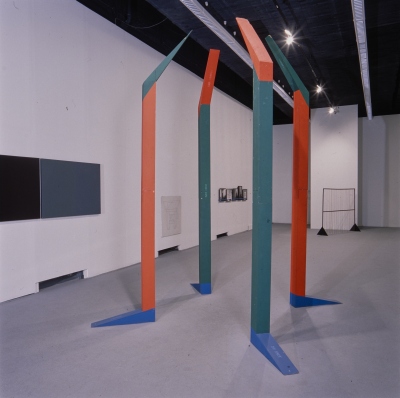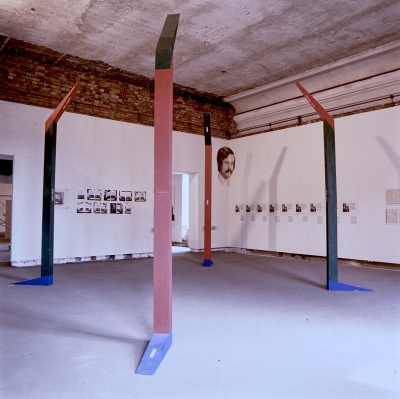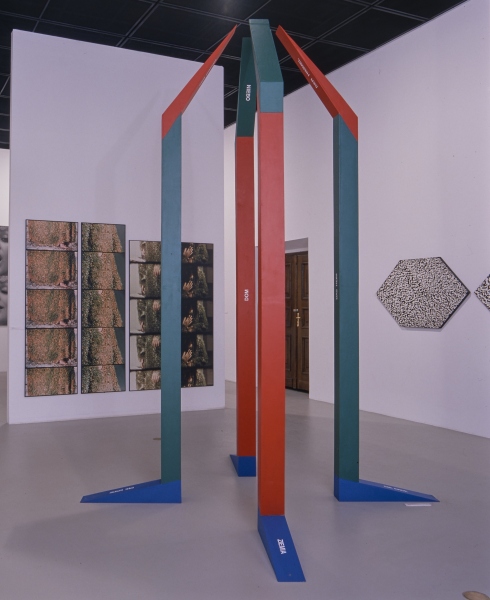Andrzej Dłużniewski
Earth, House, Sky
Andrzej Dłużniewski developed his own path and did not associate with one particular art medium, he created works that used different media and became their individual combination – he was close to the idea of intermedia. His approach was not limited to art and was based on the integral link between art and life.
The artist’s involvement in literature resulted, among other projects, in an examination of the differences of grammatical genders in various European languages. He was interested in how the grammatical gender of a noun in a particular language affected the concept described by that word. For example if in Polish śmierć is feminine and in German der Tod it is masculine, does that mean that death is perceived and understood differently in these languages? This is probably why the visualizations of this concept are different in both languages. Or maybe it was the other way around – the ancient personifications of death were different in these nations, and this caused the establishment of different grammatical genders? Dłużniewski created numerous paintings, installations and objects related to this issue. He developed his own code for recording the genders of nouns by assigning colours to them – so the masculine gender was marked with red, the female gender – blue, neuter – green.
The Earth, House, Sky installation explores and reveals the differences between these words in Polish and German languages. It resembles the outline of an architectural structure composed of four specially shaped poles. It illustrates in a conventional manner all three concepts contained in the title of the work. The base of the installation, symbolizing the Earth, is blue because both the words “earth” and die Erde are of female gender. But the similarities end there. Both house and sky have different grammatical genders in Polish and German. This influences the colours of the entire structure, creating a composition based on the adopted system of colour-coding grammatical genders. Simultaneously, due to the use of simple, architectural forms, the entire installation looks like an interesting example of spatial geometric abstraction. The words placed on the structure mean that we have the right to see it as a kind of visual poetry. Dłużniewski’s work functions at the intersection of various kinds of art and media.
Andrzej Dłużniewski was a painter, illustrator, graphic designer, photographer and performer. He also published short stories and philosophical tales. In 1968, he graduated from the Faculty of Sculpture at the Academy of Fine Arts in Warsaw, where he also attended classes at the studio run by Oskar Hansen. He was a professor at the Faculty of Interior Design of his alma mater.


